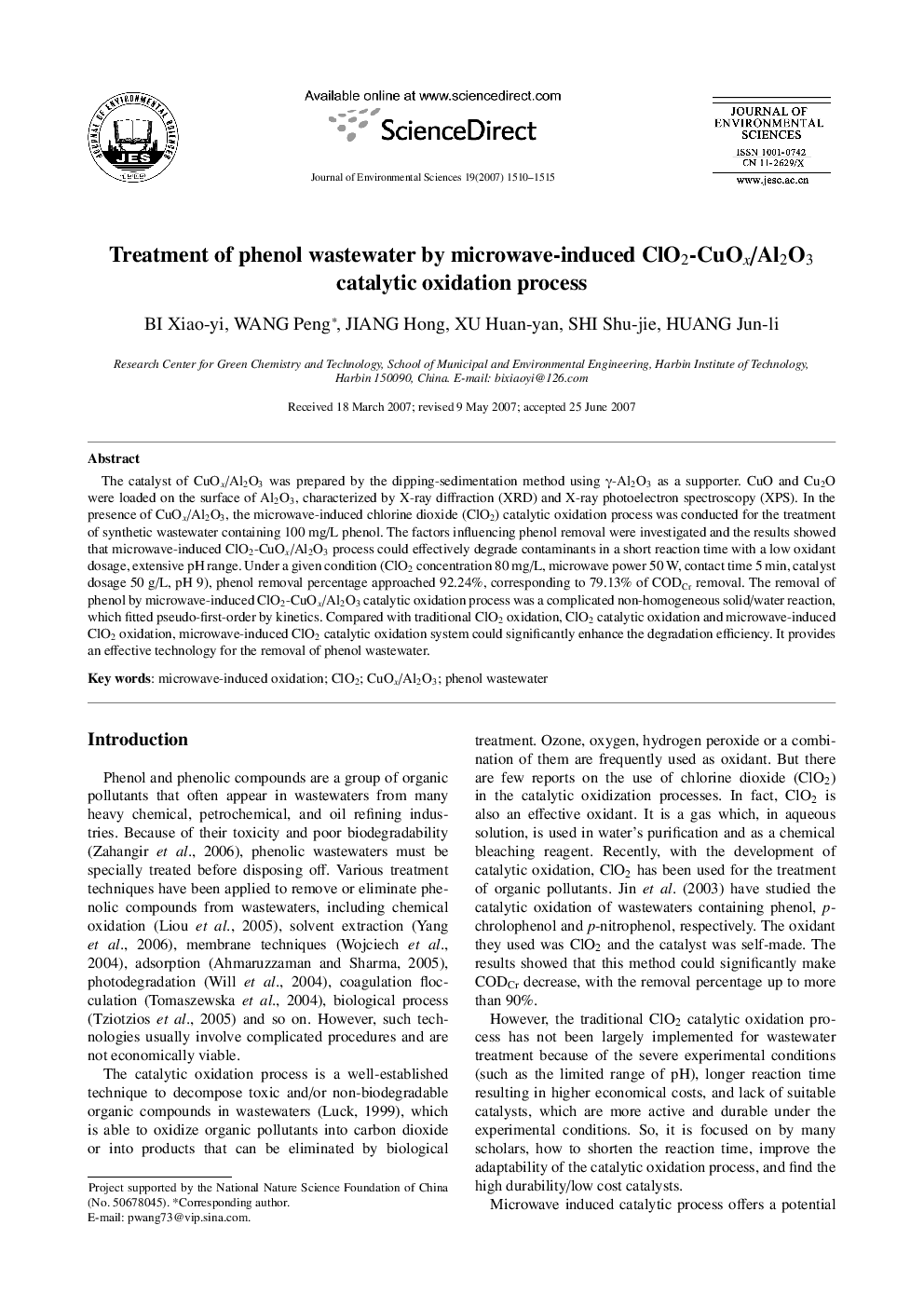| Article ID | Journal | Published Year | Pages | File Type |
|---|---|---|---|---|
| 4456603 | Journal of Environmental Sciences | 2007 | 6 Pages |
The catalyst of CuOx/Al2O3 was prepared by the dipping-sedimentation method using γ-Al2O3 as a supporter. CuO and Cu2O were loaded on the surface of Al2O3, characterized by X-ray diffraction (XRD) and X-ray photoelectron spectroscopy (XPS). In the presence of CuOx/Al2O3, the microwave-induced chlorine dioxide (ClO2) catalytic oxidation process was conducted for the treatment of synthetic wastewater containing 100 mg/L phenol. The factors influencing phenol removal were investigated and the results showed that microwave-induced ClO2-CuOx/Al2O3 process could effectively degrade contaminants in a short reaction time with a low oxidant dosage, extensive pH range. Under a given condition (ClO2 concentration 80 mg/L, microwave power 50 W, contact time 5 min, catalyst dosage 50 g/L, pH 9), phenol removal percentage approached 92.24%, corresponding to 79.13% of CODCr removal. The removal of phenol by microwave-induced ClO2-CuOx/Al2O3 catalytic oxidation process was a complicated non-homogeneous solid/water reaction, which fitted pseudo-first-order by kinetics. Compared with traditional ClO2 oxidation, ClO2 catalytic oxidation and microwave-induced ClO2 oxidation, microwave-induced ClO2 catalytic oxidation system could significantly enhance the degradation efficiency. It provides an effective technology for the removal of phenol wastewater.
